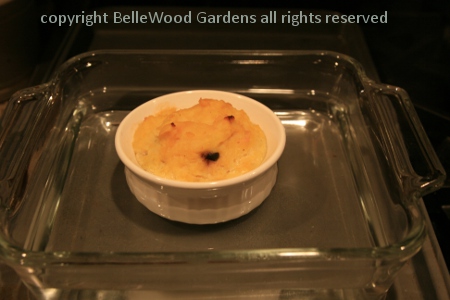
.
If you have any comments, observations, or questions about what you read here, remember you can always Contact Me
All content included on this site such as text, graphics and images is protected by U.S and international copyright law.
The compilation of all content on this site is the exclusive property of the site copyright holder.
If I want to make a pudding it is a simple thing to accomplish. Turn the oven on and let it pre-heat. Mix the pudding batter and pour it into a buttered ramekin set in a heat-proof pan. Pour some boiling water into the pan, enough to come up the side of the ramekin.

Bake until done. Easy peasy. But it wasn't always so.
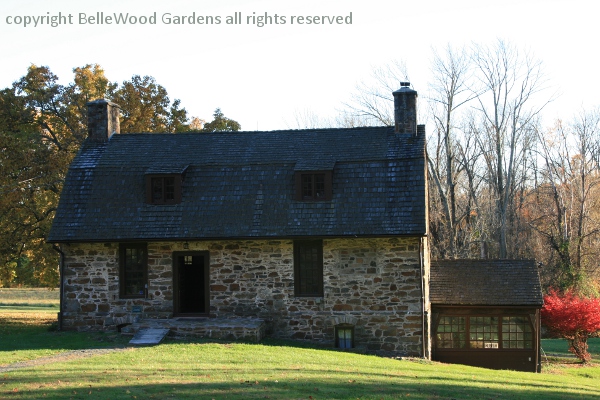
There's an open hearth cooking demonstration today, at the Bouman-Stickney Museum in Readington Township, New Jersey. The presenter will be making two kinds of puddings in their walk-in hearth: a boiled almond pudding and a baked pumpkin apple pudding. And cooking in the 18th century was not as simple as turning on the oven. Firstly, you need a fire - not so much the romantic flames but the glowing hot coals.When I arrive it was clear they needed a better supply of wood and someone to start the fire in advance of the event. I don't know whether it was the cold chimney, the windy conditions, or the random nature of their wood (perhaps all three) but the kitchen was filled with smoke. Which did clear up after the fire was going for a while so there was a better draft up the chimney.
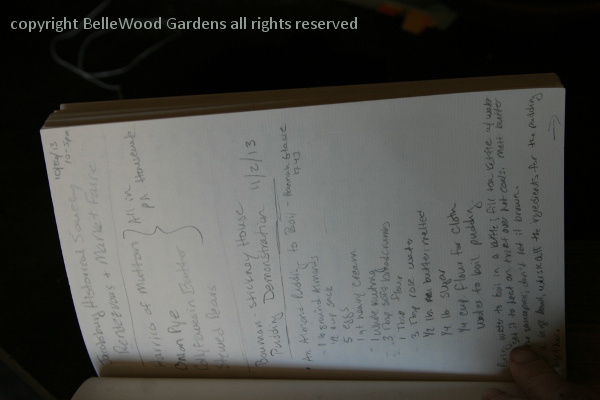
Tiffany's handwritten collection of receipts, with the dates and places where they're presented. Let's see - flour, almonds, 5 eggs, heavy cream, one whole nutmeg to be grated, bread crumbs, rose water, sugar, butter and flour for the pudding cloth, and water in which to boil the pudding.

Stir up the fire.
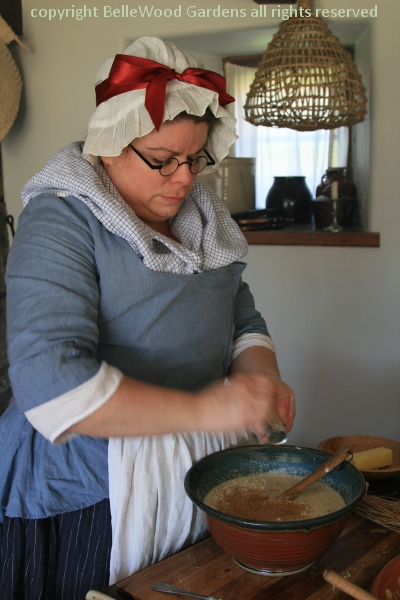
Grate the nutmeg.
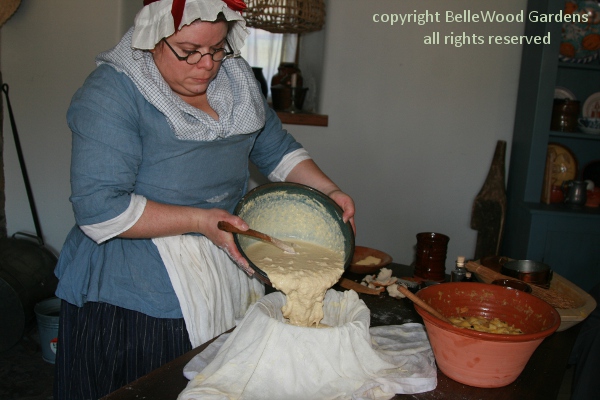
Pour the prepared pudding batter into the dampened, then buttered pudding cloth that was dusted with flour. Bring up the ends and tie firmly together, then submerge in a tin vessel of boiling water. The soaked strings are tied to the crane on which the tinned pot is suspended.
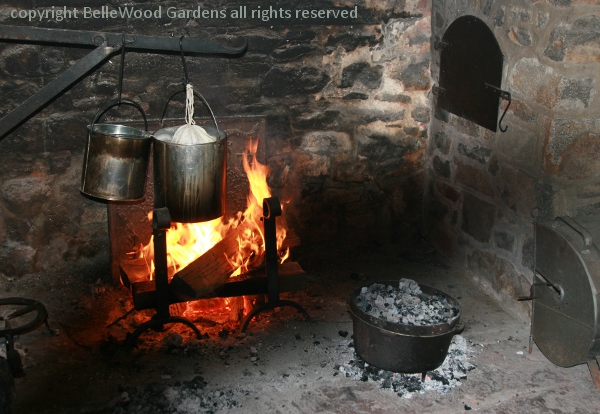
The second, smaller pot to the left has the make up water, used to replace that which boils away in as the pudding cooks for about an hour to 90 minutes. Of course the fire needs to be maintained too. The cast iron Dutch oven to the right on the hearth also has a pudding, a baked pudding. There are red hot coals underneath it, and more coals piled on the rimmed lid. Heat both above and below, and the coals need to be replenished as the previous coals burn away to ash.

The baked pudding, in the same sort of redware pottery as the mixing bowls, is set on an iron trivet in the bottom of the Dutch oven. This keeps the pudding bowl from actual contact with the heated cast iron sitting directly on the glowing coals that burn right on the hearthstones.

Hot from the oven. An apple pumpkin pudding, the basic recipe of eggs, cream, flour and sugar enhanced with cubes of apple and pumpkin and embellished with some sherry and dried berries. It's very tasty but my goodness, how much effort goes into its creation.
Back to Top
Back to November 2013